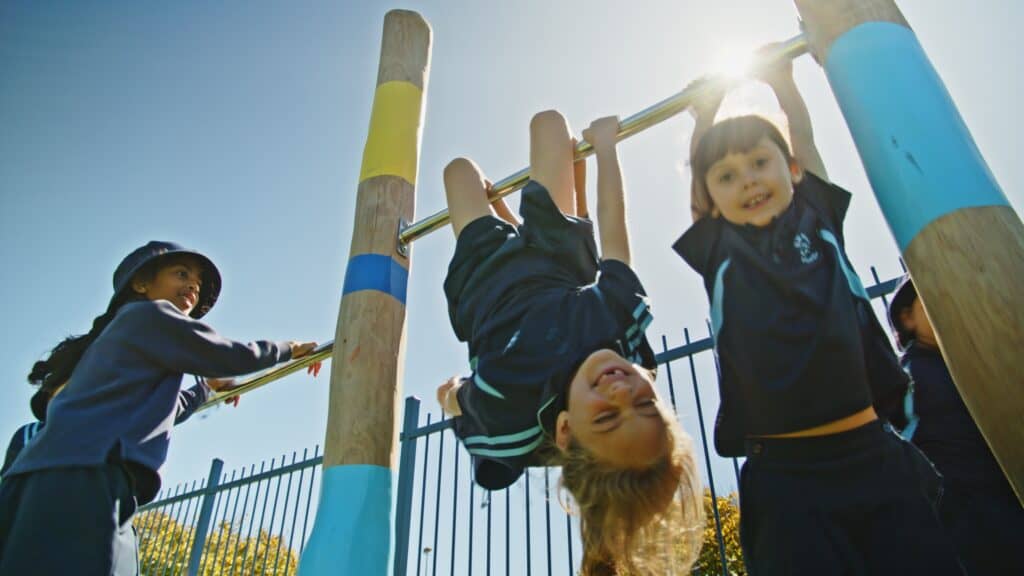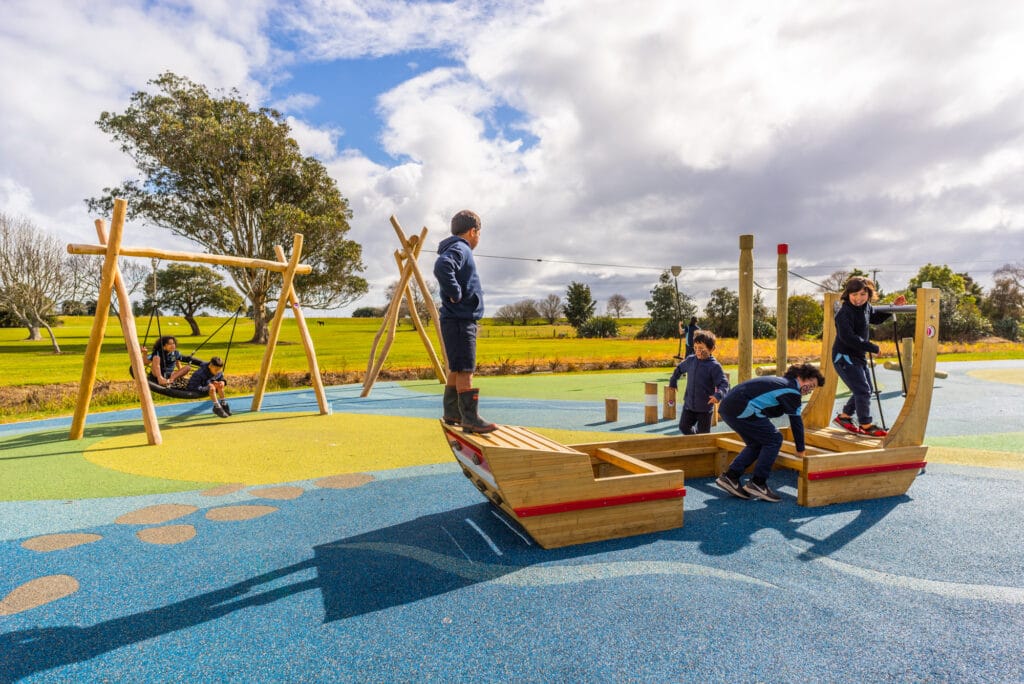Low play value equipment is an issue on almost every playground. Play value is the standard by which we measure each piece of equipment’s effectiveness, engagement, and developmental potential.
It is more than just a fleeting moment of fun; it is about the depth, variety, and richness of experiences that equipment can offer children.
In this article, you will discover the problems of low play value equipment and how to design a playground that fixes this common issue.
The Shortcomings of Low Play Value Equipment
Low play value equipment is often cheaper. The issue with them is that they do not fully engage their users and, most of the time, will occupy a space of equipment that could offer more value to your space.
- Rapid Decline in Interest: Children tend to bypass equipment that does not offer new challenges or stimulate their curiosity.
- Missed Developmental Milestones: High play value equipment can foster physical, cognitive, and social skills. Without it, we miss out on these crucial developmental opportunities.
- Frequent Replacements: Equipment that doesn’t engage kids or offer just one way of play tends to wear out faster, either from misuse or lack of use.
What Equipment Has Low Play Value?
There are types of playground equipment that are staples for a playground design. Even if they are extremely popular, they can have low play value, such as swings and see-saws.
We are not saying that you should not have them in your playground, but you should keep that in mind when designing your whole space.
Some other types of equipment that have low play value:
- Basic Monkey Bars: While they offer some physical challenges, they can become repetitive without variation.
- Single-Feature Slides: A slide is fun, but its appeal can diminish quickly without added elements or features.
- Static Spring Riders: These can provide momentary entertainment, but their repetitive motion limits prolonged engagement.
- Simplistic Balance Beams: Without varying levels or added challenges, they offer limited physical development opportunities.
- Fixed Benches: While not play equipment per se, they occupy space that could be used for more engaging features.
Elevating Play Value with Playground Equipment
To enhance the play value of playground equipment, consider integrating:
- Versatile Design: Equipment that offers multiple ways to play or has adjustable features can cater to a broader range of children and interests.
- Immersive Elements: Equipment that sparks the imagination, like pirate ship-themed climbers or castle-like structures, can transform playtime into an adventure.
- Inclusive Features: Equipment should be accessible to all, including children with disabilities. Think of wheelchair-friendly swings or sensory play panels. Learn more about inclusivity here.
- Replayability: Designs that can be approached differently each time, like modular climbing structures, keep children coming back for more.
- Educational Aspects: Integrating learning into play, such as equipment with counting games, shapes, or even basic physics principles, can boost cognitive development.

The Long-Term Value of Investing in High Play Value Equipment
High play value equipment is not just about providing quality play experiences; it is also about making smart, cost-effective choices for the long run:
- Durability and Longevity: Equipment crafted for a range of play experiences tends to last longer, reducing the frequency of maintenance and replacements.
This ensures playgrounds remain in top condition for extended periods, offering consistent value. - Consistent Engagement for Users: Playgrounds equipped with high play value items become magnets for families.
Their consistent appeal means more foot traffic, which can translate to better community engagement and potential sponsorships or partnerships. - Fewer Upgrades Needed: As these pieces cater to a broad spectrum of play needs, there’s less pressure to add or upgrade equipment constantly.
This means long-term savings and less frequent disruptions to the play area. - Maximized Space Utilization: High play value equipment often offers multifunctional play opportunities, ensuring that every inch of the playground is used to its fullest potential. This can reduce the need for additional installations, optimising space and budget.

Conclusion
The equipment you choose for your playgrounds shapes the experiences of many children. By prioritising high play value, you craft enriching, engaging, and educational spaces where children can thrive.
Read our portfolio below if you want to know more and get inspired. Or if you are ready to decide, call us on 0800 000 334 or book a site visit.

